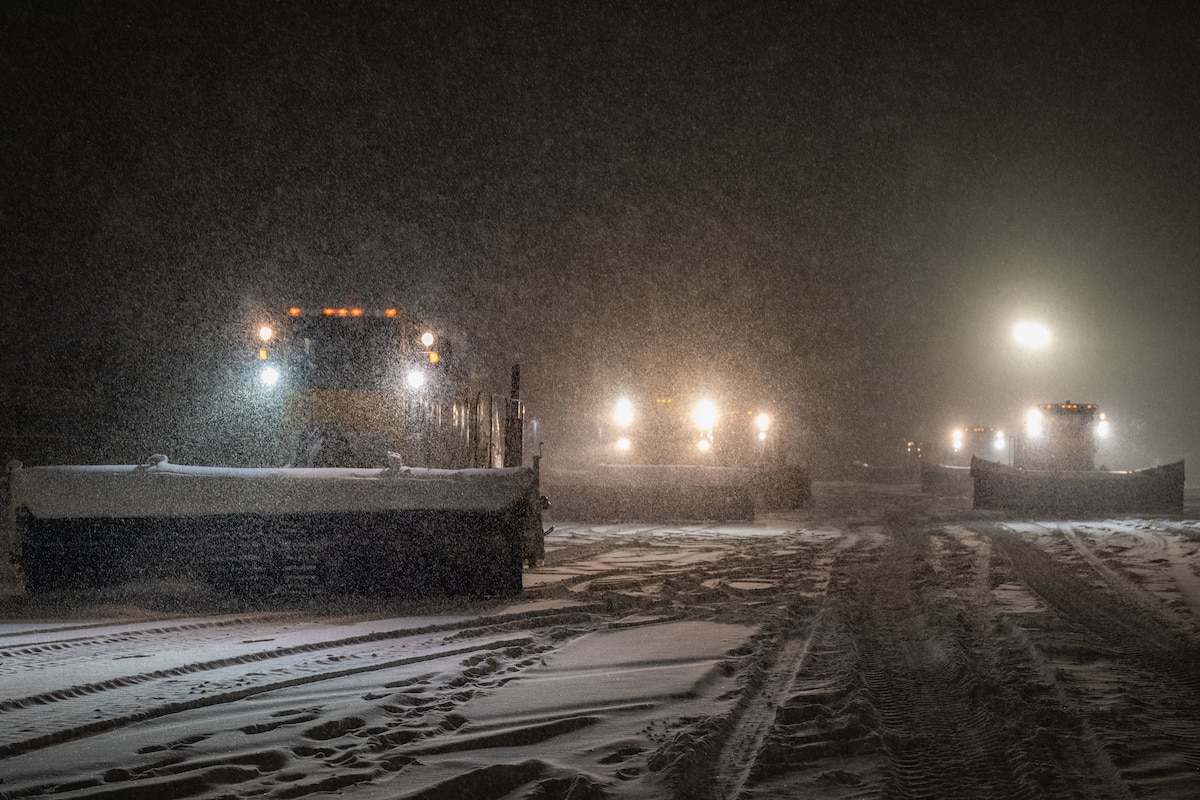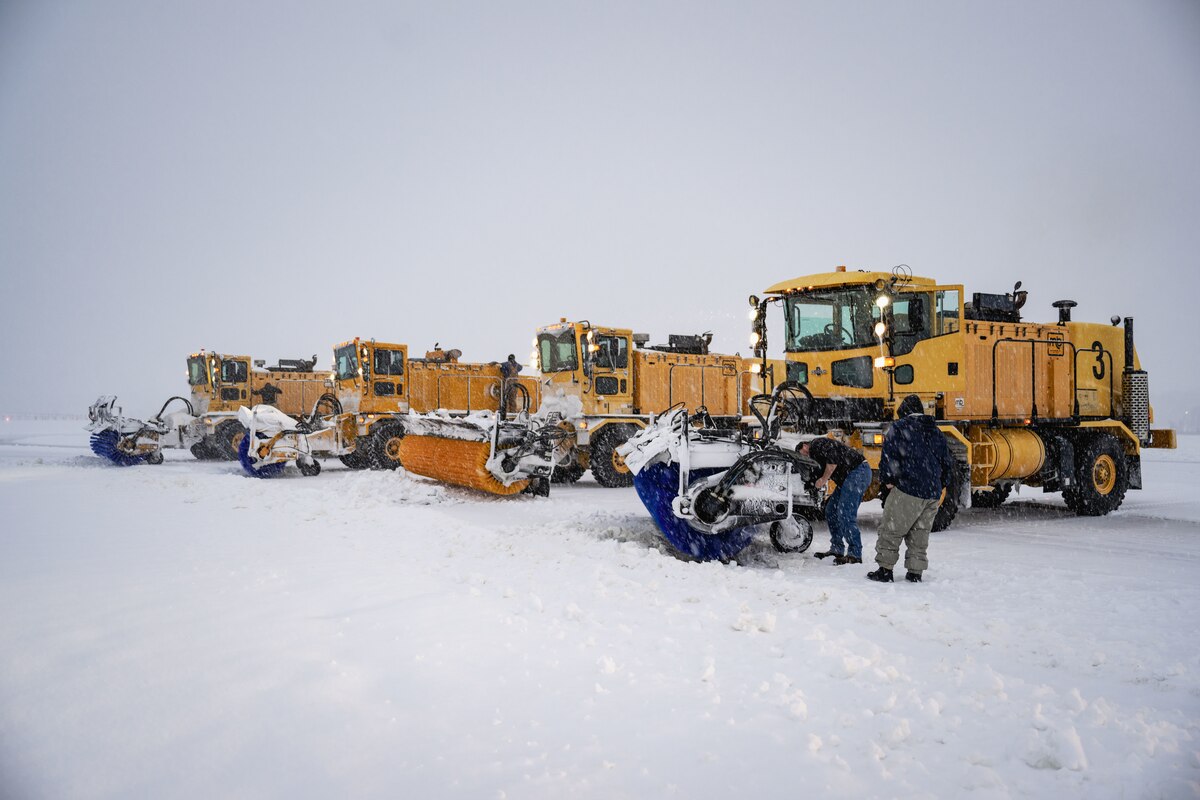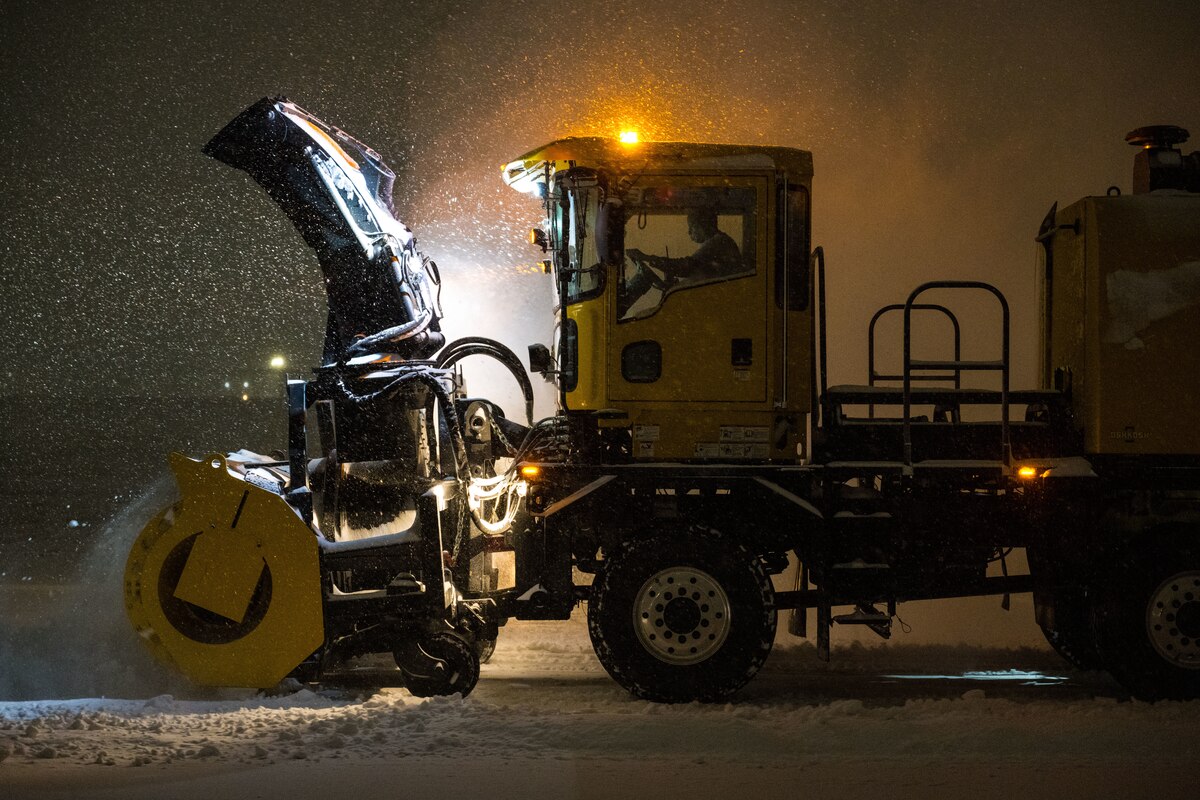What happens when there's a state funeral scheduled, and the Washington, D.C., area gets hit with its biggest snowstorm in years? The U.S. military pulls together to ensure the funeral events can carry on seamlessly.
While Washington received just over 8 inches of snow, Joint Base Andrews had 10.5 inches of snow the day before the state funeral procession for former President Jimmy Carter was scheduled to arrive, which included family members of the late president. Carter died Dec. 29, and his state funeral began in Georgia Jan. 4, moved to Washington Jan. 7, and returned to Georgia Jan. 9 for a private funeral service.
The 316th Civil Engineer Squadron was responsible for clearing the snow and ice from the airfield, ensuring the flight could land safely on Tuesday and depart safely on Thursday. The squadron is responsible for providing engineering services to keep Joint Base Andrews and its airfield operating around the clock. Although the 316th CES has a heavy equipment operator career field, it also took electricians, plumbers, carpenters and even engineering surveyors. Regardless of their craft, the whole team pitched in to clear snow and ice from the runway and walkways.
Members of the 316th CES began preparing for the storm on Sunday, Jan. 5 - the day before it began snowing. With a presidential mission scheduled for Monday afternoon, and Carter's arrival scheduled for Tuesday, Lt. Col. Marie Harnly, 316th CES commander, described this week as "all hands on deck."
She said Monday, the Airmen were clearing the runway as fast as they could, while the snow continued to fall, to ensure it was in a safe condition to fly.
"They did a fantastic job. We thought we were clear, but unfortunately as the temperatures dropped in the evening, the snow turned to ice," Harnly said. "Right before the state funeral, the same thing happened. The runway was out of limits until about an hour before the ceremony kicked off, so all our heavy equipment assets were on the airfield trying to make sure the jet could land here safely."
While engineers were clearing the runway, other Airmen were clearing ice from other areas, where the band and honor guard would march, where Carter's family members would be walking, and other areas that needed to be clear from ice before equipment could be moved in.
According to Maj. Katrina Cheesman, the 316th Wing public affairs chief, volunteers from across the base came out to help the squadron. They were outside in freezing cold temperatures and high winds with pickaxes and snow shovels, removing the snow and ice just in time.
According to Harnly, in the best conditions civil engineers operate in the shadows. When everything is working well, nobody thinks of it. "And that's a good thing," she said. "That means all the support we're providing happens seamlessly."
But during weeks like this, she said, "these are the moments our engineers live for. Everybody is energized for moments like this and focused on making sure we support the mission in the best way possible. They have worked around the clock for over five days."
On Thursday, prior to the departure ceremony, Airmen could be seen doing final touch-ups on the walkways, snow shovels in hand, even in dress blues.
"We wanted to make sure this particular ceremony, and this moment for the world, really honored our former president with dignity and respect," Harnly said. "He did so much for our nation, and we wear this uniform because we want to serve and give back. It is really important in this moment to remember what that means."









